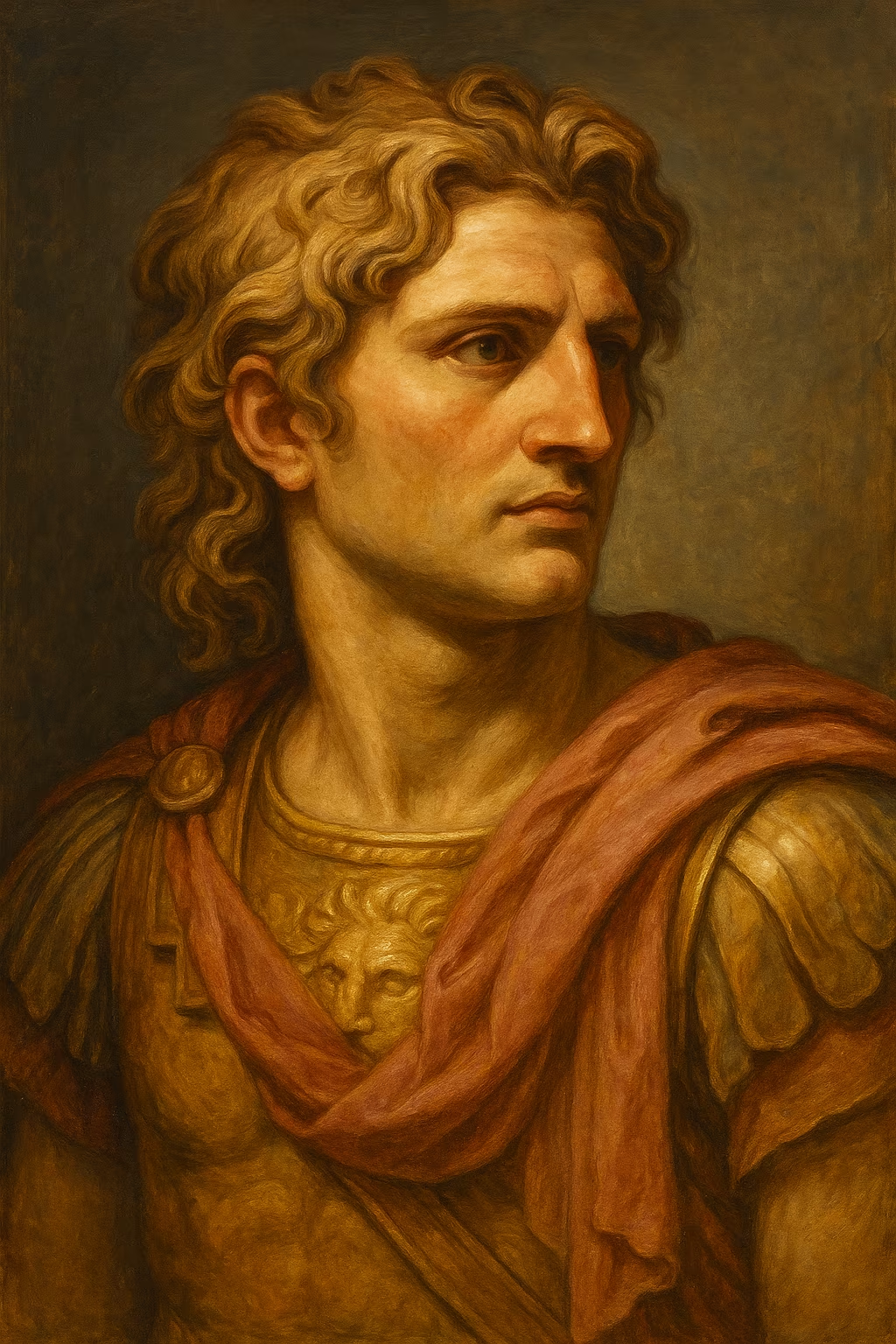Alexander the Great (356 – 323 BCE)
Quick Summary
Alexander the Great (356 – 323 BCE) was a king and major figure in history. Born in Pella, Kingdom of Macedon, Alexander the Great left a lasting impact through Overthrew the Achaemenid Persian Empire (334–331 BCE).

Birth
July 20, 356 BC Pella, Kingdom of Macedon
Death
June 10, 323 BC Babylon, Mesopotamia
Nationality
Macedonian
Occupations
Complete Biography
Early Life
Born in Pella in 356 BCE to King Philip II and Olympias, Alexander grew up in a court forged by military reform and political ambition. Educated by Aristotle at Mieza, he absorbed Homeric ideals, natural philosophy, and political theory, shaping a self-image of heroic kingship. His early exploits—taming Bucephalus, quelling unrest among Thracian tribes, and serving as regent—displayed precocious leadership and audacity.
Accession
After Philip II’s assassination in 336 BCE, Alexander secured the Macedonian throne, eliminating rivals and reasserting dominance over Greece. Confirmed as Hegemon by the Corinthian League, he crushed Thebes in 335 BCE after its revolt—an exemplar of swift punishment intended to deter further rebellion—then prepared the long-planned Asian expedition.
Conquest Of Persia
Beginning in 334 BCE, Alexander crossed the Hellespont with a veteran army. Victories at the Granicus (334), Issus (333), and Gaugamela (331) shattered Darius III’s power. He occupied Asia Minor, Phoenicia, and Egypt—where he founded Alexandria and was recognized as Pharaoh—before moving into Mesopotamia and the Persian heartlands. The capture of Babylon, Susa, and Persepolis yielded immense resources and symbolic legitimacy as 'King of Asia'.
Campaigns In Central Asia
From 330 to 327 BCE, Alexander pursued Darius’s successors and subdued Bactria and Sogdiana. This phase demanded adaptive warfare: sieges, river crossings, winter marches, and counter-insurgency against mobile opponents. He founded cities, installed satraps, recruited local elites and soldiers, and adopted elements of Achaemenid protocol to bind diverse populations to his rule.
India Campaign
In 327–325 BCE, he advanced into the Indus region, defeating King Porus at the Hydaspes (326) in a hard-fought battle marked by river tactics and combined arms. His troops, exhausted and longing for home, refused to march further east at the Hyphasis. A perilous return followed: down the Indus by fleet, then across the Gedrosian desert, testing logistical endurance and command resilience.
Administration And Policies
Alexander blended Macedonian monarchy with Achaemenid administration: retaining satrapies, minting coinage, founding urban centers as garrisons and hubs of exchange, and promoting inter-elite marriages. He fostered cultural interconnection—later termed 'Hellenistic'—through language, institutions, and networks of trade and learning, while remaining uncompromising toward mutiny and corruption among officers.
Death And Succession
In 323 BCE, at Babylon, Alexander died after a sudden illness. Without a clear adult heir—only the unborn Alexander IV and the half-brother Arrhidaeus—his generals (the Diadochi) partitioned the empire, igniting decades of conflict. Though ephemeral as a single polity, his conquests reconfigured the Eastern Mediterranean and Near East, enabling lasting Hellenistic kingdoms and a cosmopolitan cultural sphere.
Legacy
Alexander’s legacy combines military genius, charismatic kingship, and imperial experimentation. He irrevocably altered geopolitical balances and created a transregional world of exchange where Greek language and ideas interacted with ancient Near Eastern traditions. His image—heroic yet contested—has inspired imitations and critiques from antiquity to the present.
Achievements and Legacy
Major Achievements
- Overthrew the Achaemenid Persian Empire (334–331 BCE)
- Founded Alexandria in Egypt and numerous other cities
- Established a transregional Hellenistic sphere of exchange
- Demonstrated operational art: logistics, siegecraft, river crossings, and combined arms
Historical Legacy
Alexander’s conquests dismantled the Achaemenid Empire and seeded Hellenistic kingdoms whose institutions, cities, and cultural networks reshaped Eurasia. His campaigns became canonical in military studies; his imperial synthesis, though unstable, catalyzed centuries of exchange across languages, religions, sciences, and arts.
Detailed Timeline
Major Events
Birth
Born at Pella
Accession
Became King of Macedon after Philip II’s assassination
Battle of Issus
Defeated Darius III
Gaugamela & Babylon
Decisive victory; captured Babylon and became King of Asia
Hydaspes
Defeated Porus in the Indus campaign
Death
Died at Babylon
Geographic Timeline
Famous Quotes
"There is nothing impossible to him who will try."
"I would rather live a short life of glory than a long one of obscurity."
External Links
Frequently Asked Questions
When was Alexander the Great born and when did he die?
Born July 20, 356 BCE in Pella; died June 10, 323 BCE in Babylon.
Whom did he defeat to conquer Persia?
Darius III, after victories at Issus (333 BCE) and Gaugamela (331 BCE).
Did he reach India?
Yes, he campaigned to the Hydaspes (Jhelum) and reached the Hyphasis (Beas) before turning back.
What is the Hellenistic period?
The era of Greek-derived culture across the Near East and beyond after Alexander’s conquests.
Why did his empire fragment?
He left no mature heir; rival generals (Diadochi) partitioned the empire, leading to wars of succession.
Sources and Bibliography
Primary Sources
- Arrien, Anabase d’Alexandre (trads. modernes)
- Plutarque, Vie d’Alexandre
Secondary Sources
- Peter Green, Alexander of Macedon, 356–323 B.C.: A Historical Biography ISBN: 9780520275860
External References
See Also
Specialized Sites
Batailles de France
Discover battles related to this figure
Dynasties Legacy
Coming soonExplore royal and noble lineages
Timeline France
Coming soonVisualize events on the chronological timeline